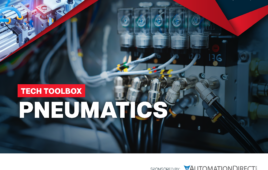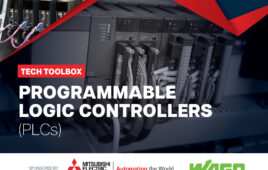
Apply smart climate control principles to reduce energy usage and help ensure long service life of your equipment
Why Enclosure Climate Control is More Important than Ever
Electrical systems are becoming increasingly compact and the number of circuits per unit volume is growing, leading to higher heat generation per unit volume. The rule of thumb for semiconductors states that increasing the component temperature by 10 K in relation to the maximum permissible component temperature reduces the part’s service life by 50%. A constant temperature is therefore the best prerequisite for a long service life and high reliability of all the electronic components. Particularly in the case of a completely populated enclosure, it is important that enough cool air flows past the components. There are several ways of achieving this as efficiently and responsibly as possible, but the right choice depends on several factors.
Industrial Climate Control Considerations
When designing the enclosure, it is important to think carefully in advance about where it will stand. It seems logical to avoid places where it would get particularly hot, but that is not always possible in practice. You must also take into consideration any needs for future expansion where additional space would be required. Is there enough space to comfortably accommodate the additional control system? Nevertheless, the most important issue remains: Is the temperature level within the permissible operating range of the installed components or does the enclosure need climate control?
Climate Control Options
Once it has been determined that climate control is needed, there are several options, including:
- Natural convection
- Fan-and-filter units
- Air/air heat exchangers
- Air/water heat exchangers
- Cooling units
- Heating units
Which solution is best for your application depends on the effective, heat loss-dissipating enclosure surface area. The heat output of an enclosure not only depends on the actual area itself but also on the way in which the enclosure is constructed. An enclosure that is free-standing on all sides can radiate or absorb more heat than an enclosure standing next to a wall or in a niche. For this reason, there are calculation formulas that make it possible to calculate the effective enclosure area, depending on the type of installation.

Keep Regulatory Standards in Mind When Selecting Cooling Solutions
There are also standards that these systems must meet. One of the requirements relates to the detection of heat. The DIN EN IEC 61439 standard “Low-voltage switchgear and controlgear assemblies” has been in effect since November 1, 2014. Depending on the strength of the current, proof by calculation or testing is required. If such proof has not been provided, liability and insurance problems may arise in extreme cases.
There are new UL standards to think about, as well. UL Standard 1995 and CSA Standard C22.2 No. 236, two standard requirements that apply to heating and cooling equipment, are currently scheduled to sunset on November 16, 2022 and November 30, 2022, respectively, ushering in the next generation of climate control safety standards.
The new standard UL/CSA 60335-2-40 is an ANSI/SCC-approved refrigerant detector standard that covers electrical heat pumps, air conditioners, and dehumidifiers. Among other things, it requires smart leak detection systems for climate control systems that use flammable refrigerants.
Opt for Energy Efficiency
Energy-efficient industrial automation begins in the design phase. Climate control solutions designed to meet properly calculated cooling needs prevent the entire system from using unnecessary power — and will keep cooling costs as low as possible in the long run. Compared to poorly designed cooling systems, a well-designed, energy-efficient climate control solution will lower the end user’s total cost of ownership by using less energy, reducing downtime due to overheating, and prolonging the life of the electronics inside the enclosure.
For more on how to design for energy-efficient climate control, including how to calculate the effective surface area of your enclosure, download the full white paper at https://info.rittal.us/perfect-climate.
Sponsored content by Rittal
Filed Under: SPONSORED CONTENT




